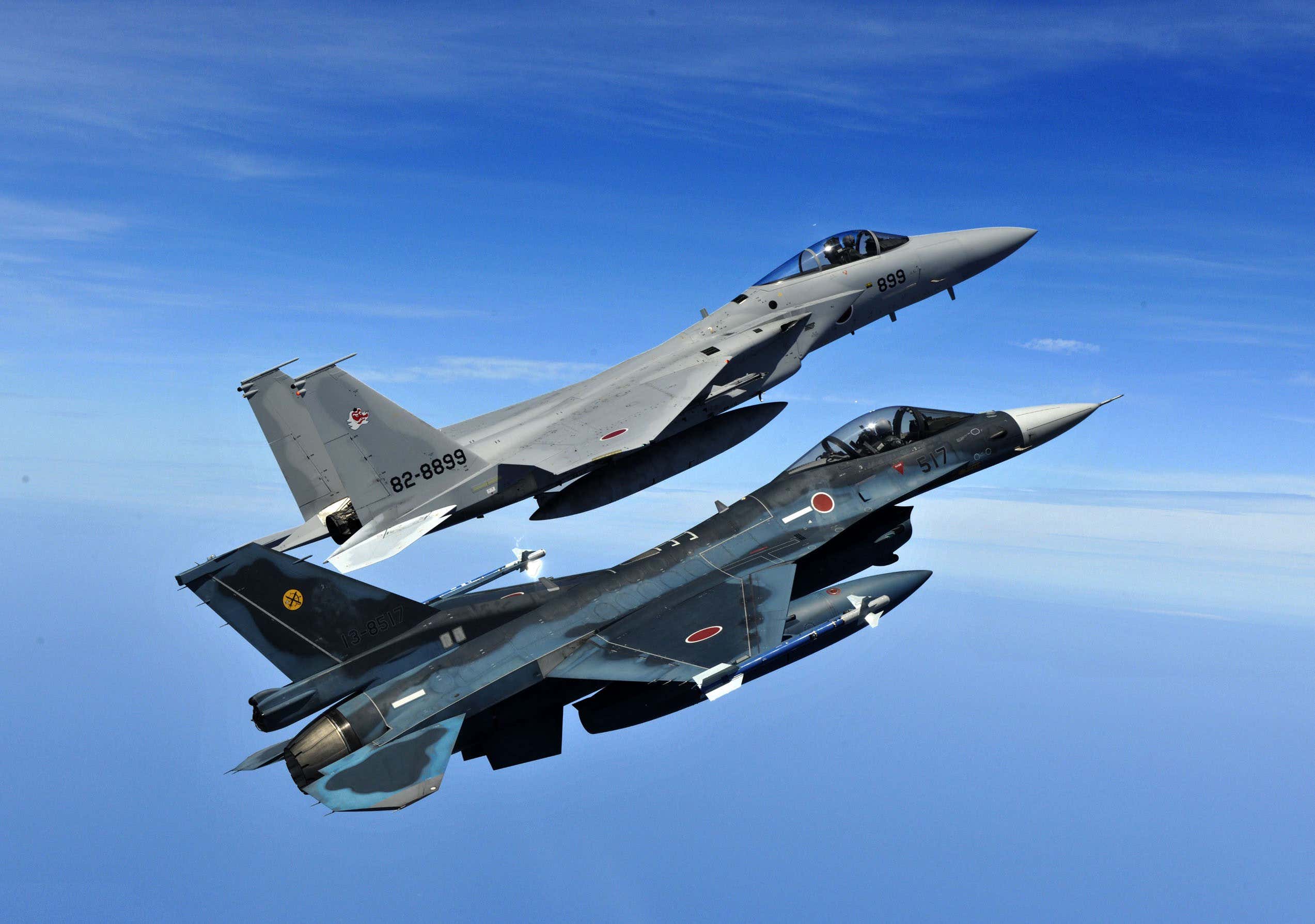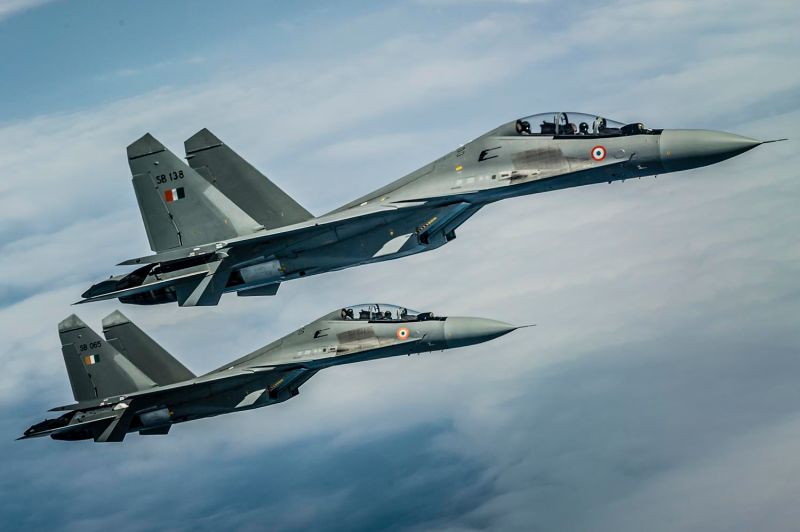In a rare military cooperation, India and Japan are set to conduct their first bilateral fighter jet training in Japan later this month. The drills, which will take place near Tokyo, will see competition between the world’s ‘best dogfighters.’
The first-ever Indo-Japanese air combat training called the “Veer Guardian 2023” will be hosted at the Hyakuri Air Base in Ibaraki Prefecture and Iruma Air Base in Saitama Prefecture in Japan.
It is a ten-day air drill that will be kicked off on January 16.
The Chief of staff of the Japan Air Self-Defense Force (JASDF), Izutsu Shunji, said at a press conference on January 12, “By conducting joint Japan-India fighter training, we aim to improve the tactical skills of the JASDF, promote mutual understanding between the Japanese and Indian air forces, and further deepen defense cooperation.”
For the air drills, the Indian Air Force (IAF) has sent four Su-30 MKI fighter jets, two C-17 transport planes, one IL-78 tanker, and a contingent of about 150 soldiers. On the other hand, the JASDF is participating in the exercise with four F-2 and four US-origin F-15 fighters.
Both US-origin F-15 and Russian-origin Su-30 are primarily air superiority fighters and are considered the ‘best dogfighters’ in the world.
Besides being the first-ever air combat drill between the two partners, it comes at a time when Japan’s military and strategic policy is going through a moment of reckoning. With intensified military threats in the region, Tokyo is modernizing its military and expanding its military cooperation with partners in the Indo-Pacific and the West.
Ambassador @ambsibigeorge welcomes the IAF contingent along with Maj Gen Ishimura Takahisa at Hyakuri Air Base in Ibaraki Prefecture. The inaugural edition of the joint fighter aircraft exercise Veer Guardian 2023 is to be held with JASDF from 12 to 26 Jan 2023.
1/2 pic.twitter.com/AaVG48TFqh— India in Japanインド大使館 (@IndianEmbTokyo) January 10, 2023
It may be very beneficial for the JASDF to train against the Russian-origin Su-30MKI fighter jet, which is produced under license in India.
This is significant as the Chinese J-16 fighter jet, the most frequent visitor to Taiwan and the international airspace near Japan, is also a developed variant of the Su-30. In addition, the PLA Air Force has a fleet of Su-30 fighter jets.
Consequentially, JASDF will likely improve its tactical capabilities to deal with Chinese aircraft and give the Japanese fighter pilots the necessary knowledge of the Su-30’s fundamental capabilities, including maneuverability, cruising range, fuel consumption, turnaround times for maintenance, etc.
Such data could prove crucial to Japanese military strategists and fighter pilots in a conflict between the two regional arch-rivals. Tokyo must prepare for combat with China as tensions continue to escalate, and a Chinese invasion of Taiwan has become a genuine possibility.
However, this is not the first time the JASDF will train with Russian-origin fighter jets. India and Japan have been part of multilateral military drills like the ‘Exercise Pitch Black’ Australia hosted in the fall of 2022.
However, a bilateral format will undoubtedly allow a focused form of training that will see the JASDF F-15 and IAF’s Su-30 cooperate and clash in the skies over Japan.
The Big Battle Between Best Dogfighters
The Su-30, or the Indian MKI version, is a multi-role, air superiority aircraft equipped with a twin engine. The warplane is a twin-seater that can function simultaneously as an interceptor, bomber, and trainer.
Two after-burning turbofan Lyulka AL-31FP engines propel the jet. With a wingspan of 14.7m, the Su-30 is a large aircraft. Various changes have been made to the Su-30 Indian variant to serve the requirements of the Indian Air Force.
The F-15 Eagle is a double-engine, multi-role strike fighter aircraft. It is a two-seat, supersonic, long-range, all-weather air superiority fighter powered by two variable after-burning Pratt & Whitney F100-PW-100 turbofan engines.

The warplane has a sweeping wing on the shoulder that was primarily created for transonic mobility and a total wingspan of around 13 meters. It is a US-origin fighter jet that has been one of the best dogfighters and is credited with substantial combat successes.
The F-15 Eagle has an advantage over the Su-30 in terms of top speed. While the Su-30 MKI can reach a top speed of Mach 2, the F-15 has a top speed slightly above Mach 2.5. Additionally, the F-15 Eagle has a maximum range of 3,900 kilometers against the Su-30’s range of 3,000 kilometers.
There are 12 hard points on the Sukhoi jet, the same as on the Eagle. A wide range of weaponry can be carried by either aircraft.
The Eagle can transport up to eight Raytheon AMRAAM radar-guided, medium-range air-to-air missiles, up to four Raytheon AIM-7F/M radar-guided Sparrow missiles, or up to four Lockheed Martin/Raytheon AIM-9LM infrared-guided Sidewinder missiles.

The Su-30 MKI, in contrast, can fire a variety of missiles, including the Kh-29L/T/TYe, Kh-31A/P, Kh-59M, and Nirbhay.
The Su-30 fleet of the IAF is also outfitted with BrahMos air-launched supersonic cruise missiles. The aircraft can also carry rocket pods, KAB-500, and KAB-1500 laser-guided bombs in addition to air-to-air missiles developed by Vympel, R-27R, R-73, and R-77.
Furthermore, the Indian aircraft have advanced Israeli and French avionics and electronic warfare systems, distinguishing them from the standard Su-30s.
Training against these fighters will be a breakthrough for JASDF pilots as the three-dimensional thrust vectoring capability of the Su-30MKI will help prepare the Japanese fighter pilots for within-visual-range air combat scenarios.
Military experts have observed that a Chinese invasion of Taiwan will most likely drag Japan into the war owing to its geographical proximity. Further, since the US has vowed to help Taiwan protect its sovereignty, Japan may have to participate in the conflict by being the most prominent American ally in the region.
Tokyo, thus, appears to be preparing for near-peer combat, and India’s Russian-origin fighters may be a great start.
While Izutsu stressed that Japan’s first bilateral fighter jet training with India is not targeted at a specific country, the ‘battle’ of the best dogfighters would be keenly watched by Beijing.
- Contact the author at sakshi.tiwari9555 (at) gmail.com
- Follow EurAsian Times on Google News




